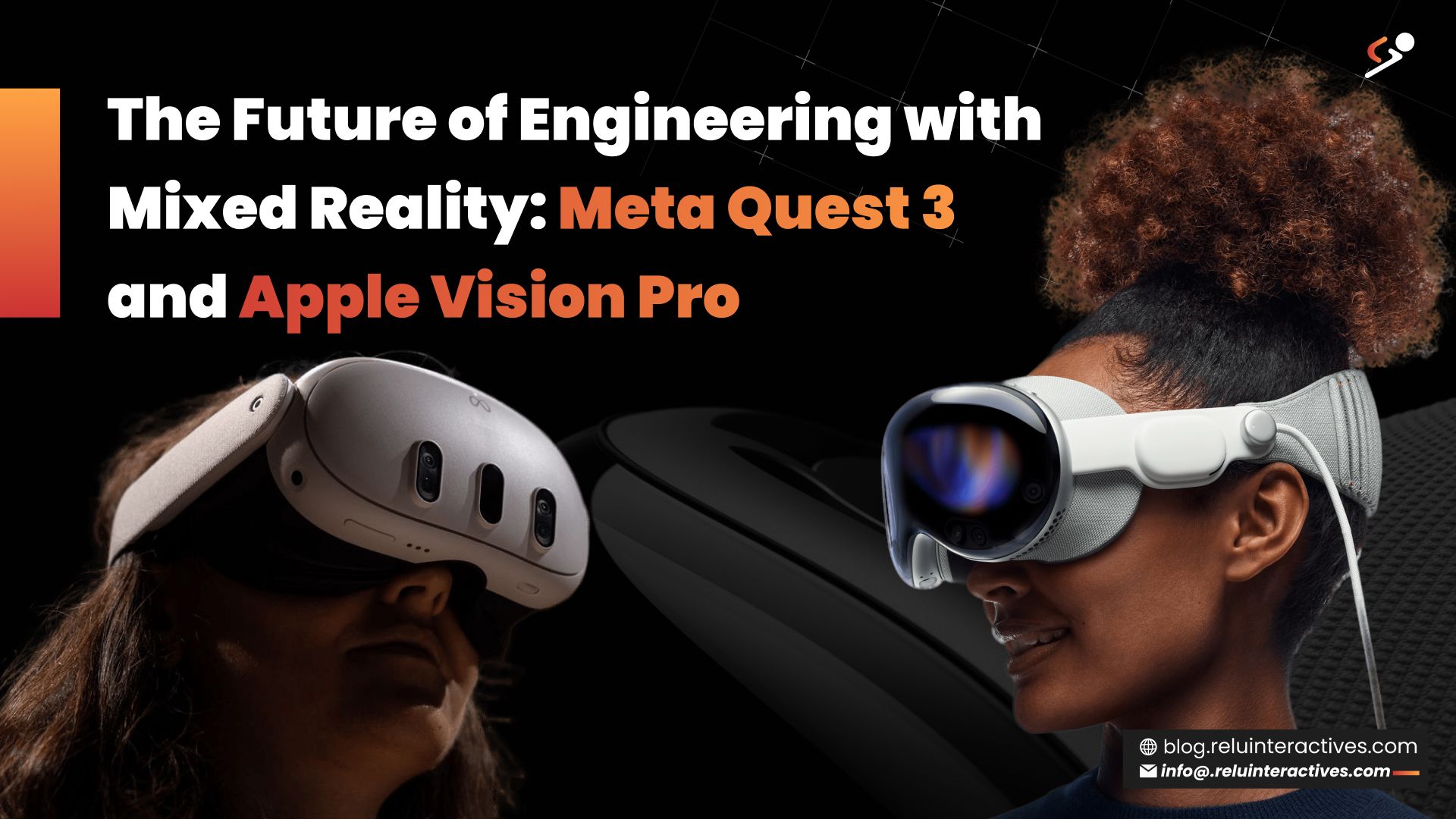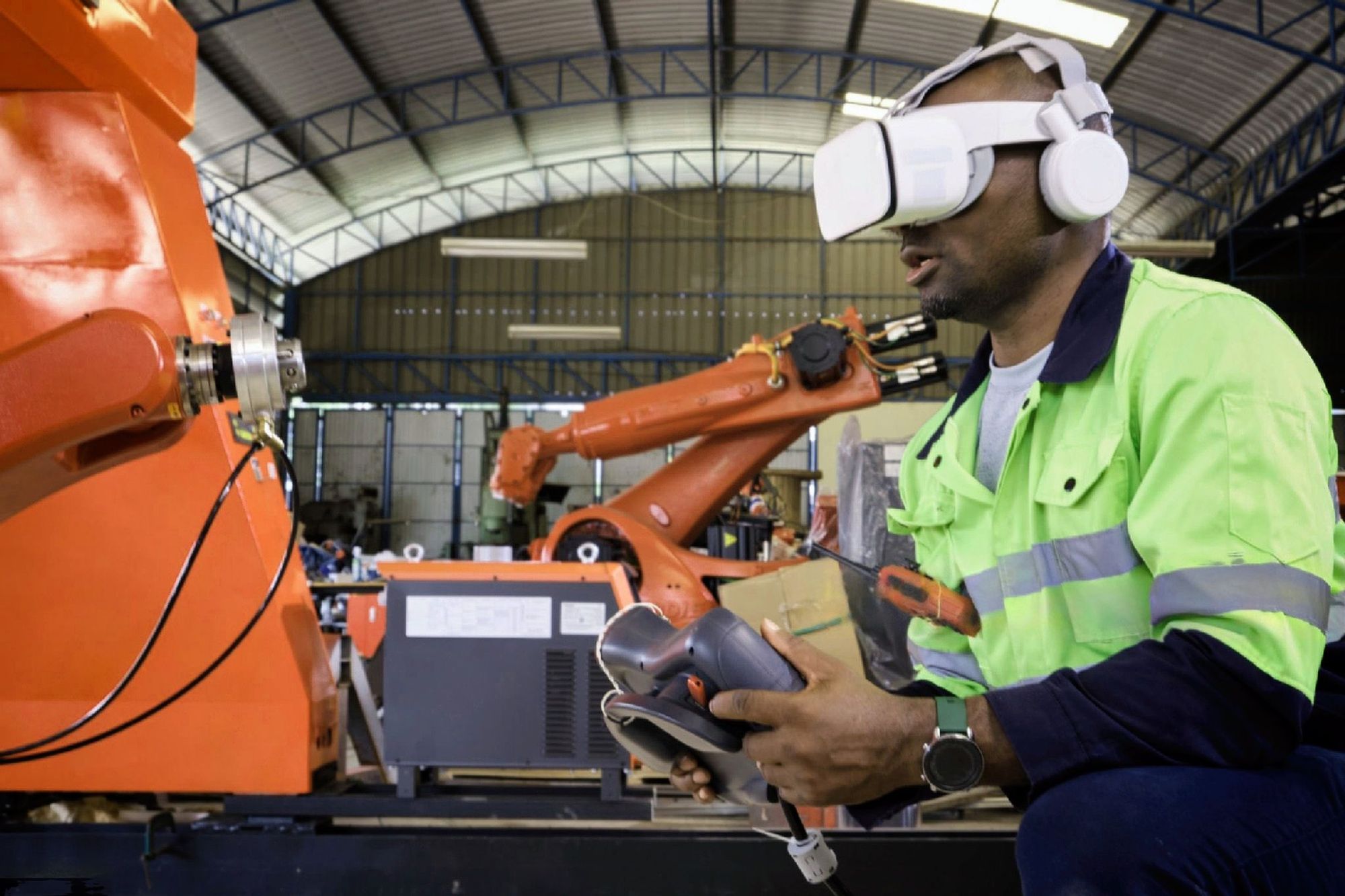The Future of Engineering with Mixed Reality: Meta Quest 3 and Apple Vision Pro
Discover how Mixed Reality, with devices like the Meta Quest 3 and Apple Vision Pro, is poised to revolutionize engineering education, design, and collaboration.

Introduction
Engineers are the quiet heroes of progress, responsible for many of the world's most amazing wonders. With the emergence of the Fourth Industrial Revolution, poised to transform industries worldwide, they stand at the forefront, leading the charge into a future!
This revolution, driven by technologies such as Artificial Intelligence (AI), Internet of Things (IoT), Cloud Computing, Big Data and several others including Immersive technologies is creating an unprecedented avenue for innovation, collaboration and education.

Among these drivers, Virtual Reality (VR) and Augmented Reality (AR) which have been the main immersive technologies in the past years have been passive and labelled as buzzwords, unlike other drivers like AI and blockchain.
Mixed Reality (MR), the latest among the immersive suite of technologies is taking centre stage in the global tech landscape because it combines elements of both VR and AR, allowing users to see and interact with the physical and virtual worlds simultaneously.

In this article, we will cover the concept of Mixed Reality, explore its potential application in the engineering sector and discuss how the recent launch of the Meta Quest 3 and Apple Vision Pro are poised to revolutionize how engineers work.
Expanding the Horizons of Engineering
Engineering applications of immersive technologies
Over the past years, engineering firms have increasingly adopted immersive technologies into their workflows;
- VR training simulations have helped engineers learn new skills and practice complex tasks in a safe and controlled environment.
- VR has been used to visualize and interact with 3D design models helping engineers to identify and fix potential problems before 3D printing, fabrication or manufacturing.
- VR has also been used to facilitate remote collaboration between engineers which allows engineers to collectively work on projects with an increased sense of presence regardless of their location.
What Mixed Reality is Bringing on Board 💡
MR vs VR
Unlike VR, MR maintains a connection to the physical world, facilitating interaction with colleagues and situational awareness. VR, on the other hand, can lead to disconnection from the real world, increasing the potential for accidents and theft.
MR vs AR
MR goes beyond AR, enabling engineers to not only see but also interact with digital elements overlaid with the physical world. This empowers them to control real-world systems using virtual interfaces, whether they're on-site or working remotely.
MR's Core
While VR immerses you fully in a virtual world for remote work, MR takes it up a notch. It places your digital colleagues as lifelike avatars in your physical surroundings, creating more natural meetings. Plus, you can interact with 3D objects during these sessions in a very natural way.
Technological Requirements of Mixed Reality Devices
- Cameras and Sensors: To track and understand the physical environment.
- Display: To see virtual objects overlaid on the physical world.
- Processing Power: High-performance processors and GPUs to render 3D virtual objects seamlessly.
- Connectivity: To access cloud-based resources, stream content, and interact with the broader digital world.
- Audio: to provide spatial sound and improve immersion.
- Battery: As a power source since most of these devices are portable.
- Interactivity: Means of interactions using hands, voice, eyes or controllers.
- Software Ecosystem: A platform to host and build applications.
- Safety Features: Pass-through cameras for real-world visibility and boundaries to prevent collisions with physical objects.
Mixed Reality hardware
Options and Flexibility: A Key Consideration
There are several Head Mounted Devices (HMD) that offer VR and AR capabilities. Only a few have support for Mixed Reality. Below are the two most common ones which have been around for some time evaluating the feasibility of long-term and mainstream adoption of Mixed Reality.

Next-Gen Mainstream Standalone Options
The arrival of the Meta Quest 3 and Apple Vision Pro are set to take Mixed Reality to the next level.

Now, Meta Quest 3 and Apple Vision Pro offer consumers and enterprises a dynamic duo of options for the latest Mixed Reality HMD. Both devices have the necessary cutting-edge technology to seamlessly operate Mixed Reality experiences standalone, making them the ideal choices for engineering applications.
With Meta Quest 3 priced at a highly accessible $500 and the Apple Vision Pro at $3,500, engineers and engineering firms now have the flexibility to choose based on their budget and specific pipeline integration requirements.

Engineering Education and Industry Adoption
The rise of Mixed Reality technology opens exciting possibilities in engineering. Schools offering engineering programs can use Meta Quest 3 for immersive, cost-effective training programs.
On the other hand, top-tier engineering companies have the option to choose between the Apple Vision Pro and the Meta Quest 3, or even embrace both.

Conclusion: A Glimpse into the Future
The emergence of Mixed Reality as a crucial driver of the economy in the future is undeniable. Individuals, educational institutions, and forward-thinking engineering companies that invest in these technologies today are positioning themselves at the forefront of the 4th Industrial Revolution.
Engineers and engineering firms are encouraged to seize this moment, explore the boundless opportunities, and lead the way in shaping the future of engineering through these transformative technologies.

